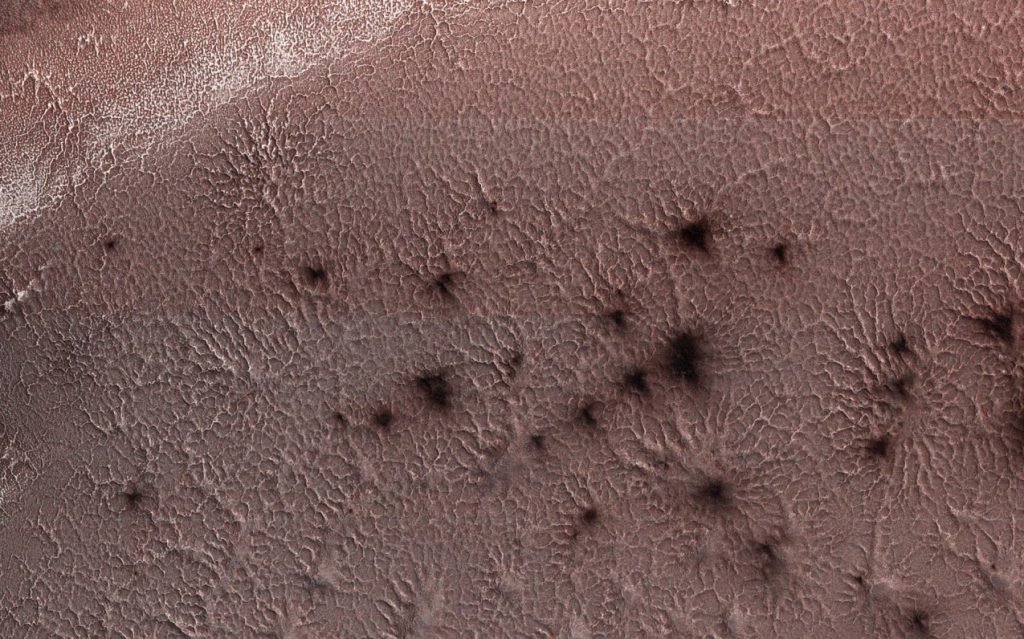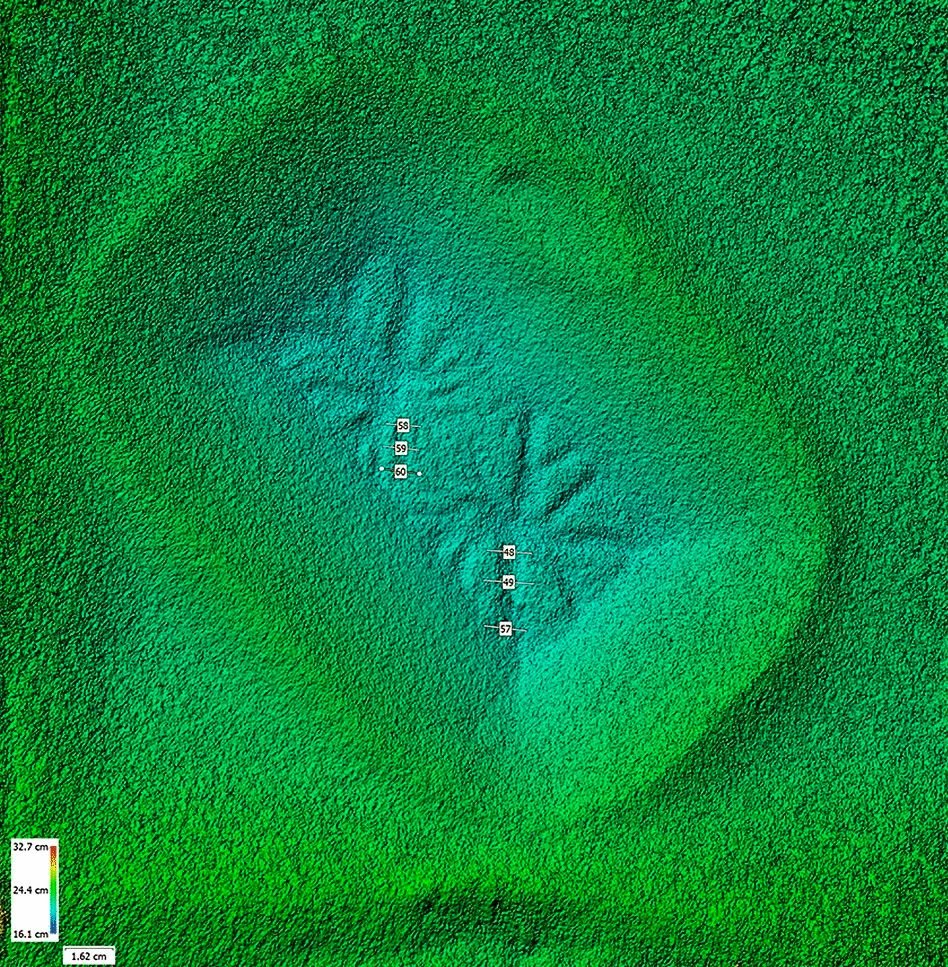Finally was found an explanation for the dark spots on Mars’ south pole, known as “spiders”.
Source: Live Science
Those patterns, visible in satellite images of the Red Planet’s south pole, aren’t real spiders, of course; but the branching, black shapes carved into the Martian surface look creepy enough that researchers dubbed them “araneiforms” (meaning “spider-like”) after discovering the shapes more than two decades ago.
In my opinion, they don’t look like a bit with spiders.

Measuring up to 3,300 feet (1 kilometer) across, the gargantuan shapes don’t resemble anything on Earth. But in a new study published March 19 in the journal Scientific Reports, scientists successfully recreated a shrunken-down version of the spiders in their lab, using a slab of carbon dioxide ice (also called dry ice) and a machine that simulates the Martian atmosphere. When the cold ice made contact with a much-warmer bed of Mars-like sediment, part of the ice instantly transformed from a solid to a gas (a process called sublimation), forming spidery cracks where the escaping gas pushed through the ice.

The Martian atmosphere contains more than 95% carbon dioxide (CO2), according to NASA, and so much of the ice and frost that forms around the planet’s poles in winter is also made of CO2. In a 2003 study, researchers hypothesized that the spiders on Mars could form in spring, when sunlight penetrates the translucent layer of CO2 ice and heats the ground underneath. That heating causes the ice to sublimate from its base, building up pressure under the ice until it finally cracks. Pent-up gas escapes through the cracks in a gushing plume, leaving behind the zigzagging spider-leg patterns visible on Mars today, the team hypothesized.
Until recently, scientists had no way of testing that hypothesis on Earth, where atmospheric conditions are vastly different. But in the new study, researchers made a little slice of Mars here on Earth, using a device called the Open University Mars Simulation Chamber. The team placed sediment grains of varying size inside the chamber, then used a system that resembles a claw machine you’d see at a local arcade to suspend a block of dry ice over the grains. The team adjusted the chamber to mimic the atmospheric conditions of Mars, then slowly lowered the dry ice block onto the grains.
The experiments proved that the spider-sublimation hypothesis is valid. Regardless of the size of the sediment grains, the dry ice always sublimated on contact with them, and the escaping gas pushed upward, carving out spider leg-like cracks along the way. According to the researchers, the spider legs branched more when the grains were finer and less when the grains were coarser.
While not definitive, these experiments provide the first physical evidence showing how the spiders on Mars may have formed. Now, isn’t that sublime.


